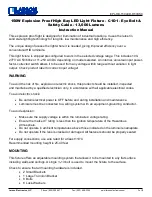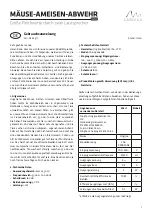
v
Blue on a component indicates touch points, where you can grip the component
to remove it from or install it in the BladeCenter HT unit, open or close a latch,
and so on.
v
For a list of supported options for the BladeCenter HT unit, see
http://www.ibm.com/servers/eserver/serverproven/compat/us/.
System reliability guidelines
To help ensure proper system cooling and system reliability, make sure that the
following requirements are met:
v
Each of the module bays on the front and rear of the BladeCenter HT unit has
either a module or a module filler installed.
v
Each of the blade bays on the front of the BladeCenter HT unit has either a
blade server or a blade filler installed.
v
Each of the drive bays in a blade server storage expansion option has either a
hot-swap drive or a filler panel installed.
v
You have followed the cabling instructions that come with optional adapters.
v
A removed hot-swap module, blade server, or drive is replaced within 1 minute of
removal.
v
Cables for the optional modules are routed according to the illustrations and
instructions in this document.
v
A failed fan module is replaced as soon as possible, to restore cooling
redundancy.
v
The airflow from the fan modules is not blocked.
Handling static-sensitive devices
Attention:
Static electricity can damage the BladeCenter HT unit and other
electronic devices. To avoid damage, keep static-sensitive devices in their
static-protective packages until you are ready to install them.
Electrostatic discharge (ESD) is the release of stored static electricity that can
damage electric circuits. Static electricity is often stored in your body and
discharged when you come in contact with an object with a different potential. Use
an ESD wrist strap and the ESD connectors on the BladeCenter HT unit. See
“Front view” on page 14 and “Rear view” on page 16 for the locations of the ESD
connectors on your BladeCenter HT unit. The ESD wrist strap safely channels the
electricity from your body to a proper ground (the BladeCenter HT unit). To work
properly, the wrist strap must have a good contact at both ends (touching your skin
at one end and connected to the ESD connector on the front or back of the
BladeCenter HT unit). Use an ESD wrist strap whenever you are working on the
BladeCenter HT unit and BladeCenter HT components.
To reduce the possibility of electrostatic discharge, observe the following
precautions:
v
Use an ESD wrist strap whenever you are working on the BladeCenter HT unit
and BladeCenter HT components.
v
Limit your movement. Movement can cause static electricity to build up around
you.
v
The use of a grounding system is recommended. For example, wear an
electrostatic-discharge wrist strap, if one is available.
v
Handle the device carefully, holding it by its edges or its frame.
v
Do not touch solder joints, pins, or exposed circuitry.
32
BladeCenter HT Type 8740 and 8750: Problem Determination and Service Guide
Содержание BladeCenter HT 8740
Страница 1: ...BladeCenter HT Type 8740 and 8750 Problem Determination and Service Guide ...
Страница 2: ......
Страница 3: ...BladeCenter HT Type 8740 and 8750 Problem Determination and Service Guide ...
Страница 8: ...vi BladeCenter HT Type 8740 and 8750 Problem Determination and Service Guide ...
Страница 48: ...30 BladeCenter HT Type 8740 and 8750 Problem Determination and Service Guide ...
Страница 118: ...100 BladeCenter HT Type 8740 and 8750 Problem Determination and Service Guide ...
Страница 142: ...124 BladeCenter HT Type 8740 and 8750 Problem Determination and Service Guide ...
Страница 150: ...132 BladeCenter HT Type 8740 and 8750 Problem Determination and Service Guide ...
Страница 156: ...138 BladeCenter HT Type 8740 and 8750 Problem Determination and Service Guide ...
Страница 157: ......
Страница 158: ... Part Number 00V9904 Printed in USA 1P P N 00V9904 ...
















































